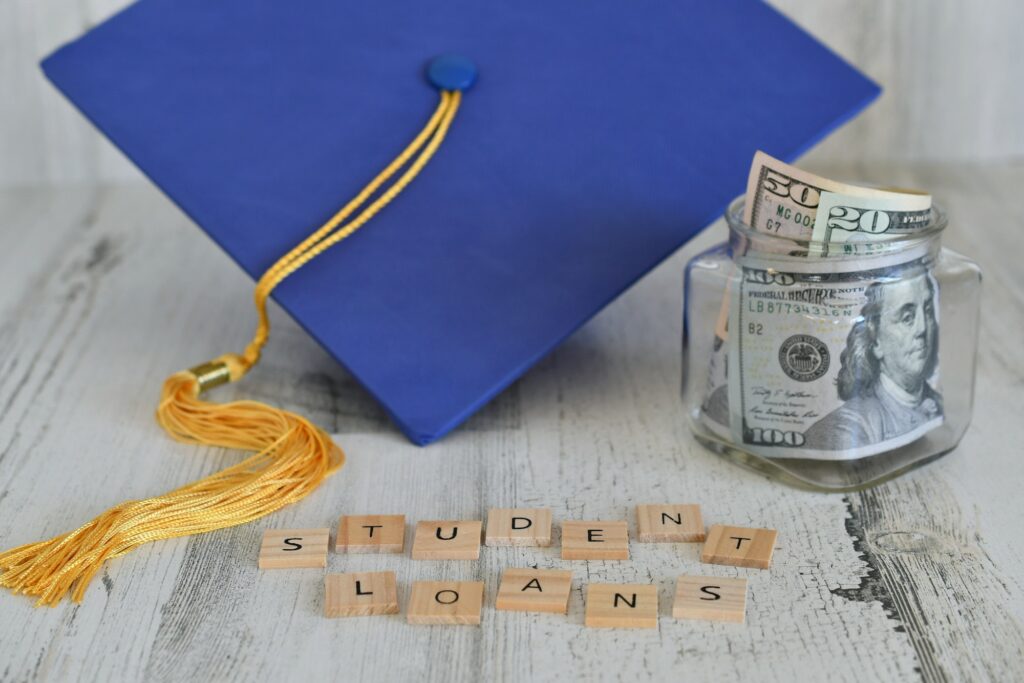The pursuit of a college education can be expensive, but the cost of attendance should not dissuade you from achieving your educational goals. One way to make higher education more affordable is to apply for federal student loans. Student loans can help cover the cost of tuition, housing, textbooks, and other related expenses.
The government takes many steps to ensure that education loans are accessible, transparent, and useable. There are several different types of federal student loans available to college students. It is important to understand the details so that you can choose the right loan that fits your needs. This article will provide a beginner’s guide to federal student loans and help you navigate the loan process.
Types of Federal Student Loans
Federal student loans are offered by the U.S. Department of Education and are tailored to meet the needs of college students. They are separated into two primary categories: direct subsidized loans and direct unsubsidized loans.
Direct Subsidized Loans
Direct subsidized loans are available to undergraduate students and are based on financial need. The government subsidizes the loan and pays the interest during most of the loan period. This means you won’t have to make any payments on the loan until after you’ve completed your studies or dropped below half-time enrollment.
To be eligible for a direct subsidized loan, you must demonstrate financial need as determined by the Free Application for Federal Student Aid (FAFSA). The maximum loan amount that can be borrowed depends on your grade level and dependency status.
Direct Unsubsidized Loans
Direct unsubsidized loans are not based on financial need and are available to undergraduate, graduate and professional students. Unlike direct subsidized loans, the government does not offer any type of subsidy or pay interest on unsubsidized loans while you are in school.
You will be responsible for making interest payments on the loans while in school, or the interest will be deferred and added to the principle amount. To be eligible, you must complete the FAFSA and maintain satisfactory academic progress. The maximum loan amount you can borrow over the course of your educational career varies depending on your grade level and dependency status.
Applying for Federal Loans
When applying for any type of student loan, you must first complete the FAFSA. This is a requirement for all federal student loans, and you will need to renew your FAFSA every year. Once the FAFSA has been completed and processed, the U.S. Department of Education will review your application and decide if you are eligible for federal student aid.
Once you have been approved, you will receive a Student Aid Report (SAR). This report will provide details on the type and amount of aid you are eligible to receive. You will then need to complete the application process with your school’s financial aid office.
Repaying Federal Student Loans
Once you have completed school, it’s time to start thinking about how to repay your federal student loans. Depending on the loans you have taken out, you may have different repayment options. The most common repayment plans are:
Standard Repayment Plan – This is the most common repayment plan and allows you to pay a fixed amount each month over a period of ten years. This is generally the best option if you can afford the payments.
Graduated Repayment Plan – This plan allows you to start off with smaller payments that gradually increase over time. Payments may increase every two years or so and the repayment period is still 10 years. This is a good option if you anticipate an increase in income over time.
Extended Repayment Plan – With this option, you can spread out your loan payments over a period of 25 years. Payments are either fixed or graduated, depending on your preference. This is a good option if you want to lower your monthly payments, but keep in mind that it may increase the amount of interest you pay over the life of the loan.
Income-Driven Repayment Plans – These plans are based on your income, family size, and other factors. The amount you are required to pay each month is recalculated every year. Your payments can also be as low as $0 per month, depending on your financial situation.
If you are having trouble making payments on your loans, there are several options for loan deferment and forbearance. Deferment and forbearance can temporarily postpone or reduce the amount you have to pay on your loans. Be sure to contact your lender or loan servicer to explore your options.
Loan Forgiveness
In some cases, you may be able to have all or part of your loans forgiven. There are several different federal loan forgiveness programs available. The most popular ones are:
Public Service Loan Forgiveness – If you have been employed in a public service job over the last 10 years and have made 120 or more payments on time, you may be eligible for full federal loan forgiveness.
Teacher Loan Forgiveness – This program allows teachers working in low-income schools to have the balance of their student loans forgiven after five consecutive years of teaching service.
Other programs may be available depending on your situation. Be sure to explore all of your options before assuming you don’t qualify for loan forgiveness.
Final Thoughts
Making the decision on how to pay for college can be stressful and confusing. Federal student loans can be a great way to make college more affordable. Understanding the types of loans available, the application process, repayment plans, and loan forgiveness programs can help you make the best decisions to pay for your education and reach your goals.

